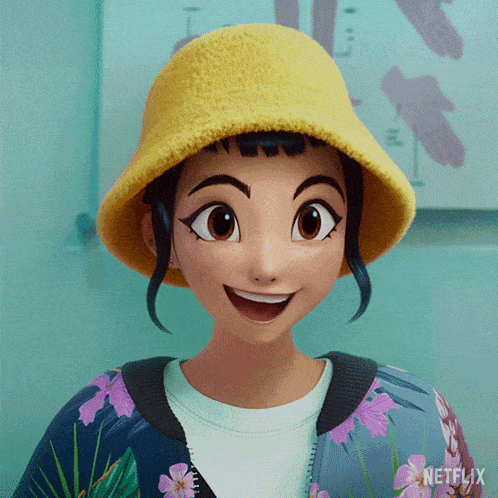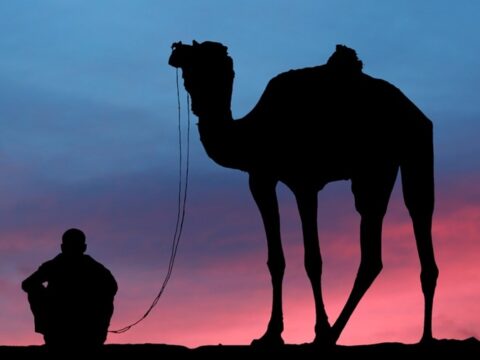In case you’re living under a rock, KPop Demon Hunters is the viral movie sensation of the year. Seriously, nobody can stop talking about this movie, and I admit that my first impression was to laugh at the ridiculous title. Then again, I suspected that it was probably a good watch. How else would something with such a dumb name become the most-streamed Netflix film of all time? The animation looked amazing, and the out-of-context memes online were pretty hilarious. So my husband and I finally watched it.
And let me tell you: it did NOT disappoint me! Especially when I did some research and realized how much authentic Korean folklore inspired this vivid and groundbreaking movie. It might be made for kids, but it has plenty of complexity to keep adults engaged too. Which is why it has exploded into mainstream fandom.
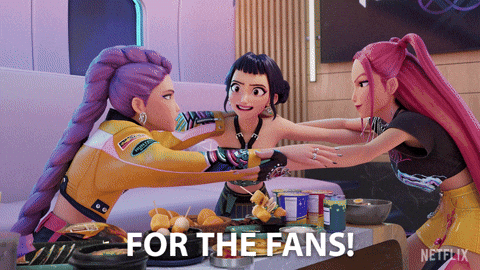
Korean Folklore Meets Modern Fantasy
I wasn’t familiar with Korean folklore before this week. I’ve read quite a few Japanese fairy tales in my time and others from around Asia. But once I saw KPop Demon Hunters, I took a deep dive into Korea. It definitely has similarities to other Asian storytelling, which is known for its focus on family, honor, respect for community, and darker themes. Asia boasts some of the fiercest monsters and spookiest ghosts you’ll ever read about—not to mention demons.
Korea is no exception, but I quickly discovered the aspects of Korean folklore that are unique. It should surprise no one that Korean demons are completely distinct from Judeo-Christian ideas about demons and demonic possession. Way too many people approach KPop Demon Hunters with a purely western lens about demons, but this story CLEARLY was not written with that lens in mind.
I can appreciate how universal the film is and how everyone can see themselves in the characters and the main conflict. It’s got that universal appeal that every filmmaker hopes to achieve. But just because audiences have gleaned many, many messages from this movie, that doesn’t mean that the culture it’s referencing isn’t super specific. KPop Demon Hunters is stuffed full of rich Korean influences, and honestly, I want everyone to know how clever and intentional this movie actually is.
Let’s take a look at the Korean folklore that inspired this very special project. I promise not to include any spoilers here, but for the love of all that’s holy, if you haven’t seen this movie, PLEASE stop reading and go watch it. I beg you.
Song as Protection: The Original Korean Shamans
Korean folklore draws from many different religions, including Buddhism, Confucianism, and even Christianity in more modern stories. But the oldest and most influential source of all is Korean shamanism, also known as Mugyo or Sinism. This encompasses all the ancient rituals shamans used to drive out evil spirits and protect their communities. Shamanism happened in ancient Korean villages, and surprisingly, most shamans were women. Take note that this was a time period when women were very rarely in positions of power, so this was an exception.
A female shaman, also called a mudang, drove out darkness in a variety of ways. One of the most prominent methods was a ritual called gut. This involved a mudang dressed in an elaborate costume while she sang, danced, and performed incantations for the entire village. This was a very public and musical sight for all to see.
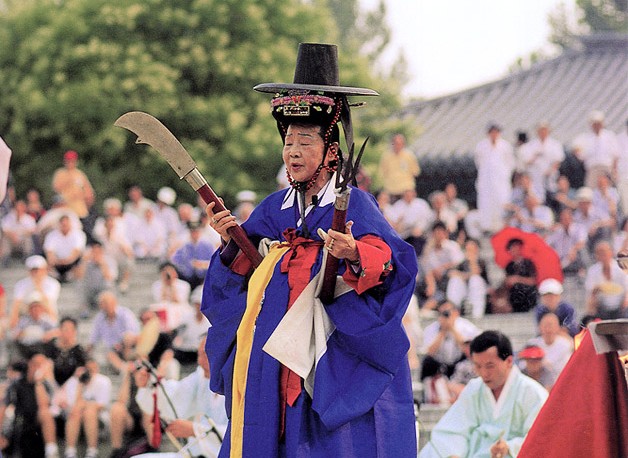
The creator of KPop Demon Hunters, Maggie Kang, has said in multiple interviews that this exact ritual from Korean shamanism was what inspired the concept of KPDH. Basically, gut rituals were the first concerts in ancient Korea. When Kang blended that idea with modern K-pop, the whole movie came together. A girl group who sings to recharge a magical barrier against demons? Absolutely!
Traditional Korean Weaponry
Of course demon hunters don’t just sing. They kick butt too, so obviously the Huntr/x girls need weapons to match their otherworldly singing voices. Korean shamanism also informed the weapons choices for the demon hunter trio, and all three weapons have spiritual subtext.
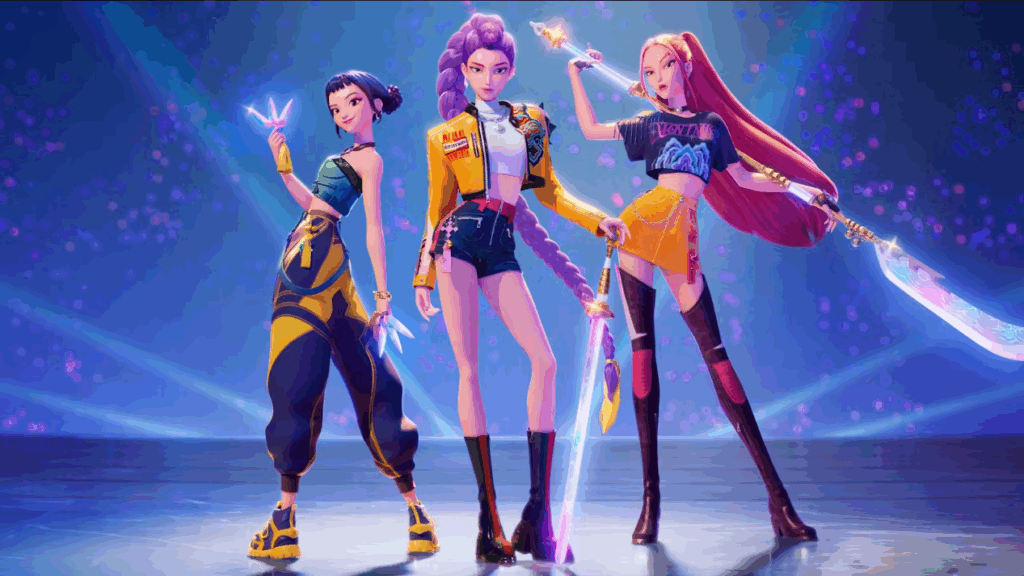
Let’s start with Zoey’s throwing knives, which are a direct reference to the Skinkal or spirit knife used in gut. A mudang uses this knife to fight off evil spirits while dancing, so of course a member of Huntr/x would use the Shinkal. I also love how Zoey, the youngest member of the group, uses the smallest weapon as if daring you to underestimate her. The Shinkal is the most versatile mudang weapon, used for dance, exorcism, ritualistic cutting, and even fortunetelling. Zoey too is the most flexible member of Huntr/x, always willing to do what the group needs.
Next up is Mira, whose weapon is ENORMOUS. That giant sword is a traditional gokdo, a curved Korean polearm. It’s the biggest weapon in a shaman’s arsenal, and its power and elegance are perfect for Mira as a character. The gokdo also symbolizes harmony between heaven and earth. Mira mentions many times that the Huntr/x girls aren’t just her friends, they’re her found family. So Mira fights with a gokdo to emphasize that she’s found where she belongs and found harmony in herself. Her chill, unshakeable attitude sure seems to agree.
Then we have the lead singer, Rumi, with her classic long sword. But not just any long sword. Rumi’s sword is the saingeom, meaning “the sword of four tigers.” Tigers are a big deal in Korea (we’ll get to that later), so the most powerful sword is forged when the year of the tiger, month of the tiger, day of the tiger, and hour of the tiger all align. This happens only once every 60 years, which explains why the saingeom was wielded only by shamans and royalty. Rumi happens to be both a mudang AND K-pop royalty, and this perfect sword made at the perfect time also mirrors her crippling perfectionism. I think this weapon choice deserves a chef’s kiss.
The Fairy Tale of Princess Bari
While we’re talking about Rumi, let’s touch on a Korean fairy tale that inspired several aspects of KPop Demon Hunters. The story of “Abandoned Princess Bari” features the first shaman of Korea who also had some—ahem—family drama. When her royal parents marry too quickly, they’re cursed with a string of six daughters and no sons. Then daughter number seven arrives, leaving the parents so enraged that they abandon the infant. Her grandparents rescue and raise Baby Princess Bari, and this ends up being a godsend to her ungrateful parents.
When the king and queen fall deathly ill, only a potion and heavenly flowers can cure them. The couple begs their first six daughters to retrieve the antidote, but they all refuse. So the parents are forced to ask the seventh daughter that they abandoned. Princess Bari agrees to save them and embarks on a long heroic journey, helping many suffering souls in the underworld. When she returns with the elixir, Bari resurrects her parents from death and is finally showered with honor. She becomes a deity of the underworld for her brave actions, and her song is now part of the death rites of Korean shamanism.
The KPop Demon Hunters team confirmed that the many versions of Princess Bari helped them conceptualize Rumi’s character. Like Bari, Rumi has parents issues. She may not be the first demon hunter, but she is the first of her kind: half human and half demon.
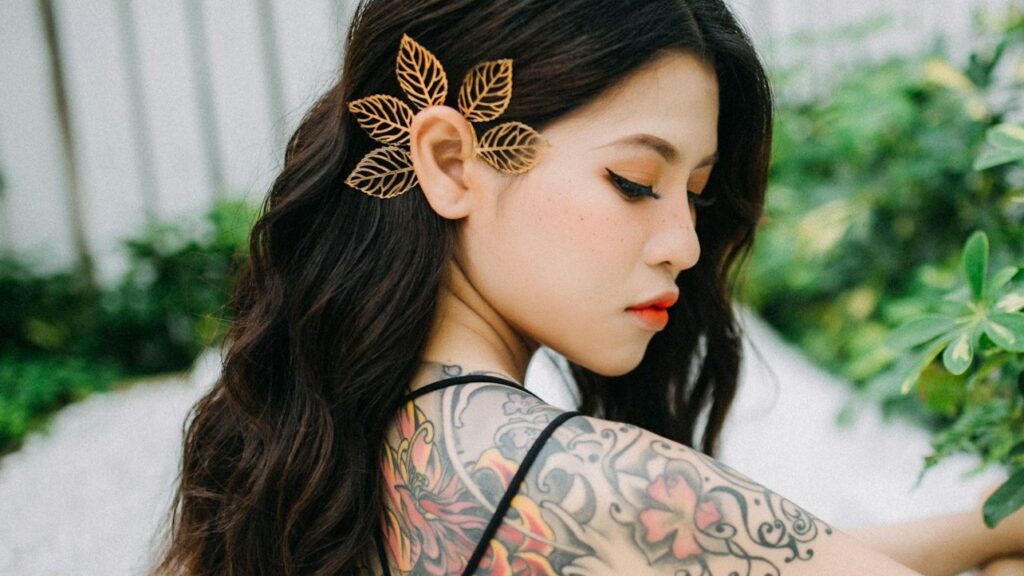
Rumi obviously carries a lot of shame about who she is, where she came from, and the heavy responsibility of completing her deceased mother’s mission to save the world. The parallels are pretty cool in my opinion. And Princess Bari isn’t the only source material with ties to the underworld . . .
Jeoseung Saja: Korea’s Grim Reaper
Ah ha! You knew we’d get to the Saja Boys, didn’t you? And yes, Maggie Kang has confirmed that the character design of this demon boy band is based on a specific figure in Korean folklore. Jeoseung Saja is the grim reaper of Korean folklore, though he’s more of a species than a singular person. The name “Jeoseung Saja” translates to “messenger of the underworld,” which is fitting since the Jeoseung Saja works for the God of the Underworld to guide souls to the afterlife. (Side note: the word “saja” has many meanings in Korean, but the most mainstream translation is “lion.” Hence why the Saja Boys have lion branding and call their fans the Pride. I love a well-placed double meaning!)
Aside from Jeoseung Saja’s grim occupation, he’s also known for his macabre appearance. Traditionally he resembles a tall, pale human being who travels the earth dressed in a long black hanbok jacket and a black wide-brimmed Korean hat known as a gat. The black gat was once worn by Korean noblemen, so this fashion choice reinforces Jeoseung Saja as an authority figure as he seeks out the souls of the dead.
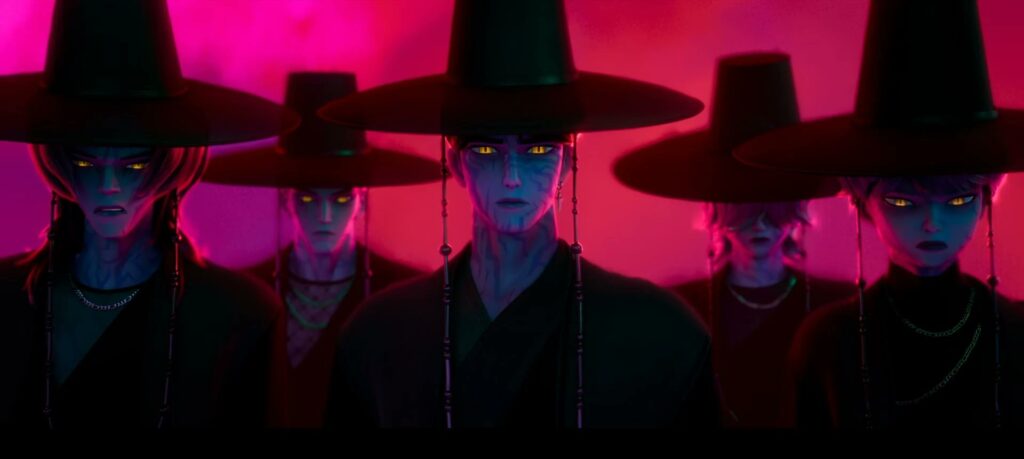
Obviously Jeoseung Saja symbolizes death. In many stories, people dream of the Jeoseung Saja shortly before they die, but I will say that Jeoseung Saja isn’t an evil figure by any means. Saja never kills anyone like the western grim reaper. He’s simply the peaceful guide who shows souls where to go as they pass on to the afterlife. So in this sense, Jeoseung Saja parallels the Saja Boys super well since it’s unclear from the beginning whether their leading man, Jinu, is good or bad. But I promised no spoilers . . . While we’re on the subject of the Saja Boys, it’s high time we talked about Korean demons.
Dokkaebi: Koreas Original Demons
KPop Demon Hunters is filled with demons that directly resemble the classic dokkaebi ogres or goblins. These dokkaebi have horns, fangs, and bright-colored faces, usually red or yellow. Maggie Kang used traditional Korean masks as inspiration for her demons since many of these masks are based on legends of the dokkaebi, hence the horns and fangs.
In old stories, these mischievous little buggers can be friendly just as often as they’re dangerous. Sometimes they’re helpful, sometimes pranksters, but very rarely are they outright evil to human beings. Dokkaebi have all kinds of supernatural powers in Korean fairy tales. Some have hats that make them invisible or the ability to disappear and reappear at will. Many stories feature shape-shifting dokkaebi. Some can summon objects, control the elements like water or fire, or even enchant mortal woman into bearing half-dokkaebi babies. That last detail certainly applies to Rumi’s parents . . .
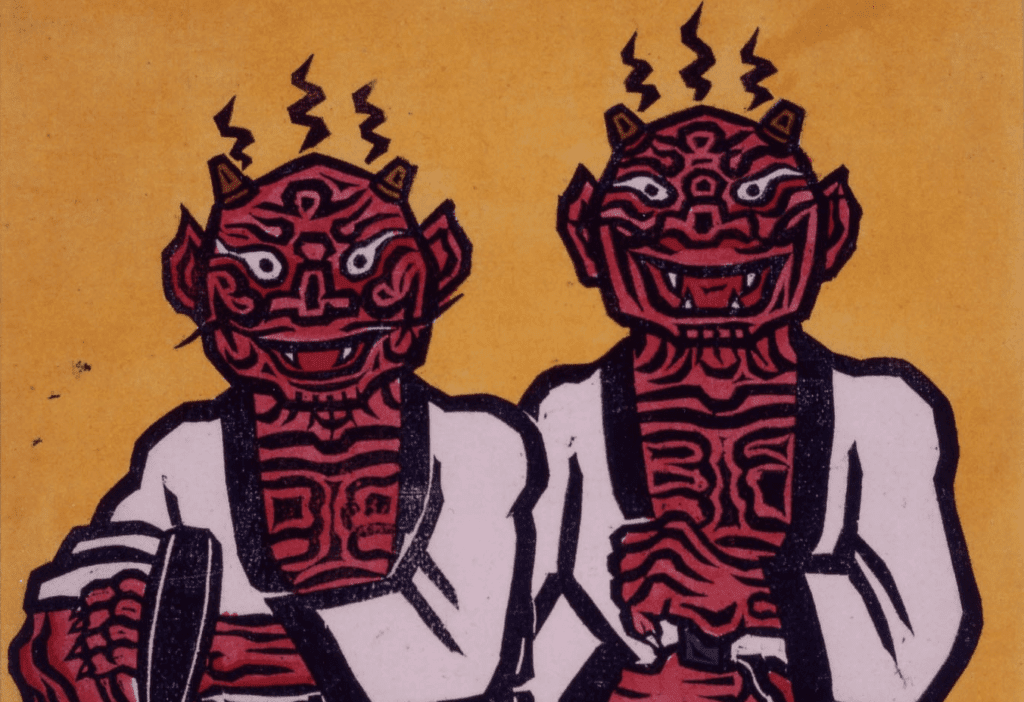
The important thing is that dokkaebi are considered an unpredictable force of nature. They can destroy you or help you depending on how you play your cards, so it’s always best to be on your toes in the presence of a dokkaebi. KPop Demon Hunters of course takes a more malevolent spin on demons generally, but dokkaebi aren’t the only Korean creatures that inspired Maggie Kang.
Other Supernatural Monsters of Korea
This movie has many references to Korean ghosts, who are the souls of deceased human beings with unfinished business. A human soul that hasn’t crossed over to the afterlife is called a gwishin, and these apparitions haunt mortals until their unresolved trauma is made right.
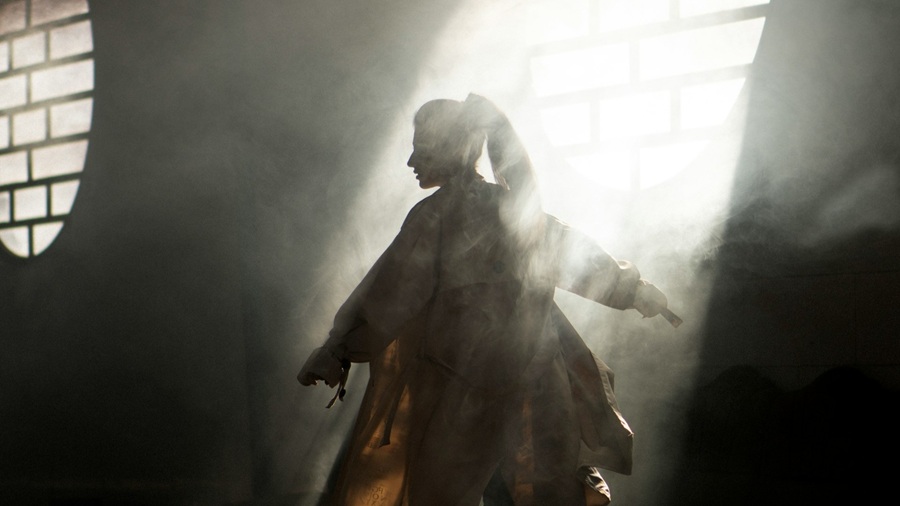
There are several ghost-inspired demons in KPop Demon Hunters. The green slimy water demons that attack the Huntr/x girls in the bathhouse are based on mul gwishin water ghosts. These are the souls of humans who drowned and haunt the same bodies of water where they died. Doomed to remain in the water forever, these lonely souls often drag other victims into the depths to share their watery grave. Spooky.
Another terrifying Korean ghost is the dalgyal gwishin or egg ghost. Traditionally these ghosts are faceless, limbless, and haunt mountain trails. This strange ghost is rumored to be the most frightening since just one look at this egg-shaped terror can kill you. This particular monster seems to be the inspiration for the horde of faceless demons from the train scene of KPop Demon Hunters.
Lastly, we’ve got the agwi or “hungry ghosts” of Korean folklore. This is based on Buddhist tradition and refers to an immortal being who is insatiably hungry and feeds on the life energy of the sick or depressed. This sounds awfully similar to the whole concept of KPDH and the demons’ need to consume souls. The movie never really explains what happens to the people who lose their souls to the demons. I guess they just . . . die? Disappear? It’s super unclear, but whatever our theories are, the demons of KPDH can definitely sing. We’re all still listening to “Soda Pop” on repeat.
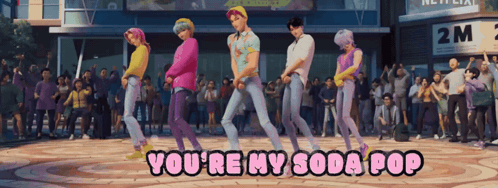
Last, But Not Least, the Tiger and the Magpie
I saved the best for last! Let’s talk about Jinu’s tiger and bird sidekicks since I can’t be the only person who thinks that Jinu’s tiger is one of the best characters in the whole movie. The tiger and magpie combo comes from Hojakdo, a type of Minhwa artwork from ancient Korea. This animal pairing is a popular one even in modern Korea.
So . . . why a tiger and a magpie, you ask? Well, they’re both deeply symbolic. The tiger symbolizes Korea as a nation. There’s a tiger in Korea’s creation myth and many other Korean stories, and tigers are believed to protect households and drive away evil spirits. The magpie is also a symbol of good luck and often the bearer of good news. In Hojakdo, the tiger symbolizes the Korean ruling class while the magpie represents the common people of Korea.
I also have to mention that Hojakdo artwork is extremely satirical. This is why the tiger often has an exaggerated, stupid face while the dignified magpie is perched above in a pine tree.
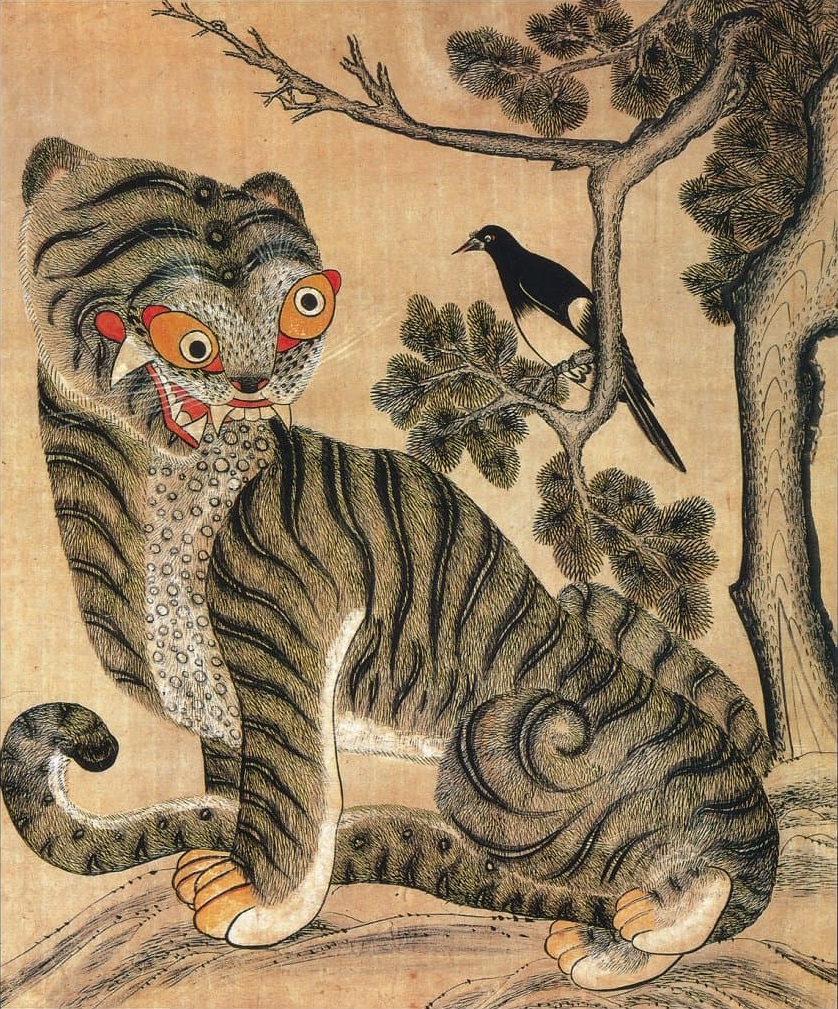
The artists were poking fun at the ruling class of Korea while also capturing the importance of the common people. KPop Demon Hunters ran with this interpretation and made the magpie the cool straight man while the tiger is a derpy space cadet. A charming derpy space cadet. I couldn’t get enough of that tiger when I watched it for the first time, and even by my fourth watch, I still loved him.
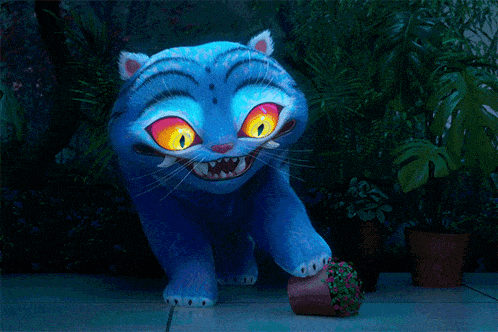
Please Excuse Me While I Watch KPop Demon Hunters Again
Seriously, I enjoyed every minute of this movie, and I notice more and more little Easter eggs every time I watch it. I’m in awe of how fun and original this story is. And the fact that so much authentic Korean culture made its way into a brand new cultural phenomenon is just the best. It’s not a perfect movie by any means, but I definitely recommend it. ❧
